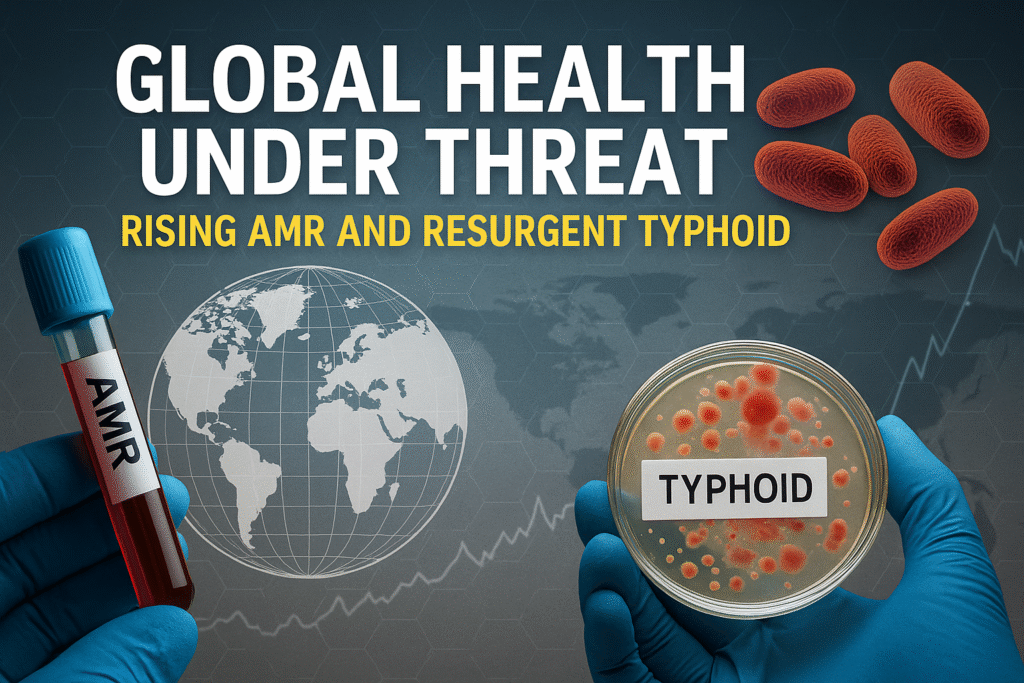Global Health Under Threat: Rising AMR and Resurgent Typhoid | World News

Global Health Under Threat: Rising AMR and Resurgent Typhoid in 2025
Health authorities around the world are sounding alarm bells: 2025 is shaping up to be a crossroads year when antibiotic resistance and resurging diseases collide with weakened global cooperation. From drug‑resistant typhoid spreading across continents to the collapse of efforts to build a global pandemic treaty—here’s what you need to know.
The Growing Crisis of Antimicrobial Resistance
Earlier this week, a major report warned that antimicrobial resistance (AMR) could claim millions of lives and cost economies nearly $2 trillion per year by 2050 unless urgent action is taken. Nations including the US, UK, EU, China, and Japan are expected to bear the highest economic and health burdens. In contrast, countries with shrinking foreign aid budgets are jeopardizing critical AMR projects.
Aid Cuts and Health Consequences
Furthermore, recent reductions in development assistance—such as the UK’s £5 billion aid package cuts—have crippled programs like the Fleming Fund, which had helped track drug‑resistant infections in Africa and Asia. Experts warn that weakened surveillance systems may accelerate the unchecked spread of superbugs.
Drug‑Resistant Typhoid Emerges as a Global Threat
A recent UK Health Security Agency study revealed resurgence of extensively drug-resistant (XDR) typhoid in places previously thought under control. Cases have appeared in England, Wales, and Northern Ireland, signaling that global travel and antibiotic misuse are fueling the spread of this ancient killer.
Why Typhoid Is Becoming Untreatable
Typhoid-causing Salmonella Typhi strains have developed resistance to first-line treatments, making infections harder and costlier to treat. Healthcare systems are now grappling with limited options and rising case numbers.
WHO Pandemic Treaty Falters
The WHO’s landmark pandemic preparedness agreement—designed to ensure equitable access to vaccines and treatments—has hit a roadblock. The United States formally rejected the accord, citing concerns over national sovereignty and WHO’s potential overreach. While the treaty allows WHO to hold up to 20% of pandemic supplies for global distribution, critics argue it lacks safeguards and enforcement mechanisms.
Impact of the US Rejection
With the world’s largest economy distancing itself from the treaty, cooperation among WHO member states is weakening. Analysts warn that fragmented responses could mirror past failures seen during COVID‑19, leaving vulnerable countries at risk.
Lessons from the Mpox Epidemic
Meanwhile, the ongoing mpox (clade 1b) epidemic remains a significant test of global response systems. Since August 2024, WHO declared a public health emergency as thousands of cases emerged across Central Africa, with growing importation into other regions.
How Mpox Exposed Gaps in Cooperation
Despite vaccine availability, limited resources and coordination have slowed distribution. As outbreaks persist, the lack of robust global mechanisms continues to hinder containment efforts.
What’s Being Done—And What’s Not
Some governments and organizations are taking proactive steps:
- Incentivizing new antibiotic research through public–private funding mechanisms.
- Strengthening surveillance systems where possible, though many rely on outdated infrastructure.
- Encouraging vaccine equity via donations to affected regions.
However, progress remains fragmented. Critics argue that without cohesive global structures, piecemeal reforms will not halt what may be an accelerating global health crisis.
Why This Matters to Everyone
Antimicrobial resistance isn’t just a distant threat—it affects hospitals, agriculture, food safety, and public trust in medicine. For example, routine surgeries and cancer treatments rely on effective antibiotics. If those fail, healthcare becomes far riskier. In contrast to coordinated immunization campaigns, inconsistent support for AMR could result in overwhelming consequences.
Conclusion: Proactive Steps Are Critical
2025 has revealed fault lines in global health systems—between bold ambitions and diluted action, between vulnerable communities and displaced priorities. From rising XDR typhoid to a stalled pandemic treaty, the emerging picture is clear: without renewed international cooperation and funding, the world faces avoidable crises ahead.
Frequently Asked Questions
Q1: What is antimicrobial resistance (AMR)?
It refers to bacteria and microbes evolving immunity to antibiotics, rendering standard treatments ineffective and leading to longer illnesses and higher mortality rates.
Q2: Why is drug-resistant typhoid resurfacing now?
Because XDR strains have emerged that resist common treatments. Global travel and declining hygiene practices, combined with weak regulation, are facilitating its spread beyond traditional regions.
Q3: Can countries avoid the worst outcomes?
Yes. Coordinated investments in surveillance, antibiotic research, global health treaties, and equitable vaccine distribution can slow AMR and prevent disease resurgence.